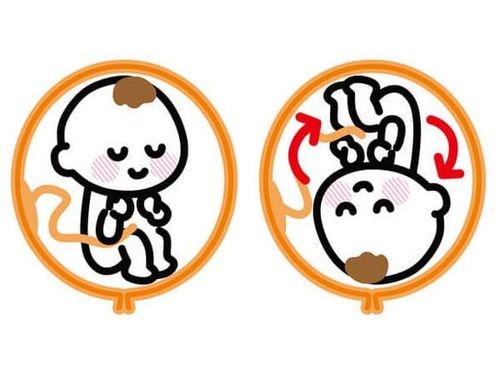This is an automatically translated article.
The article was professionally consulted by Specialist Doctor I Le Hong Lien - Department of Obstetrics and Gynecology - Vinmec Central Park International General Hospital. Doctor Lien has over 10 years of experience as a radiologist in the Department of Ultrasound at the leading hospital in the field of obstetrics and gynecology in the South - Tu Du Hospital.The fetal position is the presentation of the fetus in front of the upper waist (mother's pelvis), through which the throne will enter and progress during labor. The favorable position is the most ideal condition for the mother to have an easy birth.
1. What is the fetal position?
The fetal position is the term used to describe the position of the baby relative to the mother's cervix. During labor, the fetal part will progress and come out first. In the early stages of pregnancy (less than 28 weeks) the fetal position is usually not fixed and is called a portable one. As the fetus gets bigger, the position of the fetus will have a better adjustment.The fetal position is the position where the longitudinal axis of the fetus is parallel to the longitudinal axis of the mother. At this time, the fetus will be in a position with its head down to the vulva, the nape of the neck is turned towards the abdomen, the fetal bottom is towards the mother's chest.
The fetal position will make labor easier for the mother. At this time, the fetus will put pressure on the uterine cavity and cause contractions during childbirth. At birth, the first part of the fetus will come out of the vulva first and then the limbs. In this position, the baby will easily pass through your hips and slide out during labor.
When the fetus is located at the base of the pelvis, the biparietal region (the region of the head with the largest circumference) will be at the widest part of the pelvis. However, some babies do not lie in the correct position of the vertical position (horizontal position, breech position, etc.), which will affect the labor process.
2. At what week does the throne usually turn?

Trắc nghiệm: Khi thai nhi 32 tuần, mẹ cần chú ý gì?
Khi bước vào tuần thứ 32 của thai kỳ, thai nhi sẽ có bước phát triển vượt trội và dẫn đến những thay đổi về mọi mặt trong cơ thể mẹ. Vậy hãy cùng tìm hiểu xem khi thai 32 tuần chúng ta cần lưu ý những gì qua bài trắc nghiệm sau đây nhé.3. How to know the right position?
A lot of women don't understand what the right side of the baby is and how to recognize the vertical position? Because in fact, there is no specific feature that shows what position the fetus in the abdomen is in. Therefore, to determine the right position of the fetus or not, the best way is to go for an ultrasound at a reputable medical facility.To have a healthy pregnancy and safe delivery, pregnant women need to pay attention to regular antenatal checkups according to the doctor's appointment. Currently, at the International General Hospital, there are maternity packages with many advantages such as: Mother and baby are fully tested and screened before birth. Experienced team of doctors and nurses. Modern equipment, quiet and sterilized disease prevention system.... This is the smart choice of modern pregnant mothers to make the journey of "birthing" become lighter.
For advice on maternity packages at Vinmec, you can contact the Hospitals and clinics of Vinmec Health system nationwide
Please dial HOTLINE for more information or register for an appointment HERE. Download MyVinmec app to make appointments faster and to manage your bookings easily.














